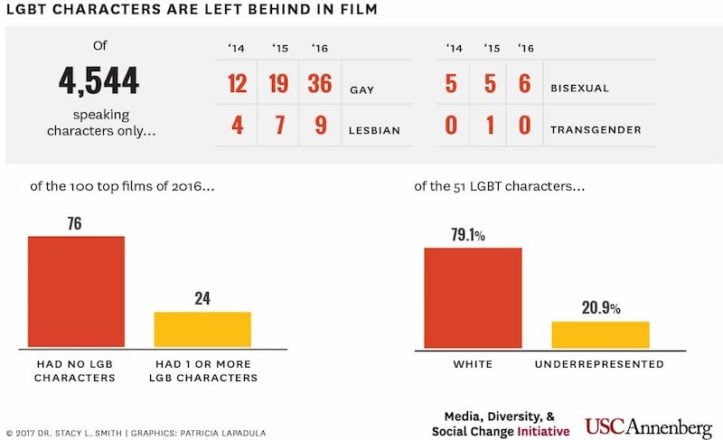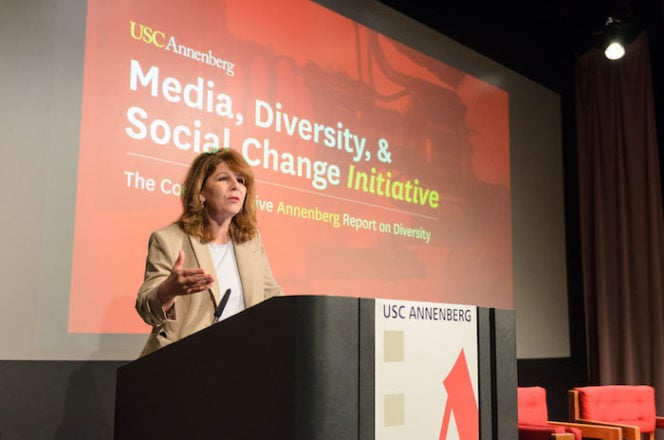
LGBT characters account for a pitiful 1.1 percent of all speaking characters in Hollywood films, which researchers say represents “sustained and systemic problems” in the film industry, according to a USC study that is the the largest and most comprehensive analysis of movie characters to date.
LOS ANGELES — LGBT characters account for a pitiful 1.1 percent of all speaking characters in Hollywood films, which researchers say represents “sustained and systemic problems” in the film industry, according to a USC study that is the largest and most comprehensive analysis of movie characters to date.
USC STUDY
The 10-year investigation analyzed 39,788 characters for gender, race and ethnicity, LGBT status, and disability. In the films studied, 70.8 percent of the speaking characters were white, and 68.6 percent were male.
Since 2007, USC has analyzed the demographic makeup of the actors, directors, and writers from each year’s 100 most popular films. Its latest addition, which was released July 31, adds data from 2016’s top films, but finds little change.
INEQUALITY IN FILMS
“These are sustained and systemic problems,” Professor Stacy L. Smith, the study’s author, said in a statement. “It is impossible to look at this data without concluding that much of the advocacy surrounding on-screen representation over the past few years has not been successful.”
The results found women, people of color and LGBT individuals continue to take a backseat to straight, white males in Hollywood films.
“Inequality in 900 Popular Films,” which was conducted by the Media Diversity and Social Change Initiative at USC’s Annenberg School for Communication and Journalism, reviewed the top 100 films from 2007 to 2016, excluding 2011.
For 2014-2016, only three LGBT characters were a “lead or co-lead.”
In the 100 most popular films of 2016, the study identified a striking lack of LGBT inclusion:
- 76 films had no LGBT characters
- Of the 4,544 characters, only 51 were lesbian, gay or bisexual
- 36 were gay males, nine were lesbian, six were bisexual
- No transgender characters were represented
- Of the 51 lesbian, gay, bisexual characters, 79.1 percent were white
The report’s “invisibility analysis” revealed other omissions:
- 54 films had no Latino characters
- 44 films included no Asian or Asian-American characters
- 25 films featured no black or African-American characters
Smith said improvements won’t happen “until solutions focus on changing the exclusionary hiring practices and countering explicit and implicit biases in Hollywood, it is difficult to expect real change anytime soon.”

Stacy L. Smith, director of Media, Diversity, and Social Change Initiative, talks at USC’s Annenberg School of Communication and Journalism about misrepresentation of women and minorities in movies during “Transforming Hollywood 7: Diversifying Entertainment,” a conference about issues of diversity, inclusion and equality.
Photo: Benjamin Dunn
